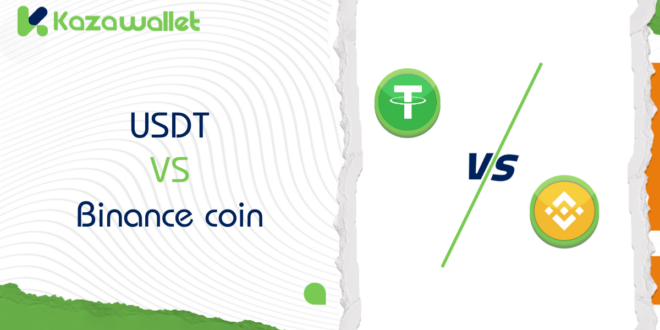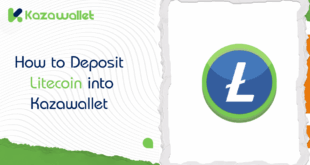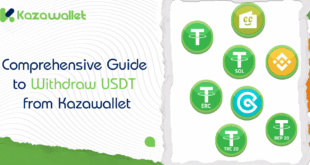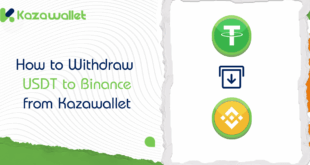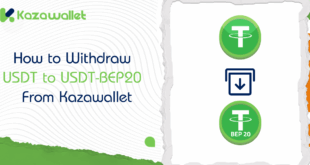What is the difference between a stablecoin like USDT and a large exchange-traded cryptocurrency like Binance? How risky are they relative to one another?
How can they be traded against and with each other? This article provides in-depth answers about USDT vs Binance written for cryptocurrency newcomers.
Disclaimer: This is not investment advice. Before investing in Binance or any other cryptocurrency, you need to do your own research and understand the associated risks. It is always advisable to conduct ongoing research or consult a financial expert before making any investment decisions.
What is USDT?

USDT, or more commonly referred to as Tether, is a stablecoin, a cryptocurrency whose value remains pegged against a stable, established fiat, in this case, the US dollar.
The core idea of USDT is to present a relatively stable haven from the extreme fluctuations inherent in cryptocurrency markets, providing traders and investors with a more stable means of holding their funds.
The concept relies on the notion that each unit of USDT must be backed by a single US dollar of reserves held by the issuing company, Tether.
This peg operates towards stabilizing the value of USDT around the value of the dollar, lowering the impacts of extreme fluctuations experienced by other currencies such as Bitcoin or Ethereum. In times of extreme market fluctuations, USDT becomes a favorite among traders for them to invest their money for a limited amount of time when the markets stabilize.
However, it’s also worth noting this haven isn’t entirely guaranteed. There remains speculation on the stability of the peg of the USDT-dollar and whether reserves touted by Tether are sufficient for every single unit of the currency.
What is Binance Coin?

Binance Coin (BNB) is the cryptocurrency of the Binance exchange, a global leader in cryptocurrency trading. BNB exists for intra-ecosystem trading, with reduced trading fees. The more BNB, the lower the trading fees. BNB also provides access to Pay for goods and services for both online and in-store purchases (using Binance Card or Binance Pay).
BNB also exists as a means of investment in its own right, traded on cryptocurrency exchanges, with expected fluctuations in value. BNB also fuels the Binance Smart Chain (BSC), a blockchain for developing and executing decentralized apps. So, BNB not only exists as a tradable cryptocurrency, but also forms a key part of Binance’s developing ecosystem, acknowledging the risks of trading in volatile cryptocurrency markets.
Read More: USDT vs Tron: A Comparison of Risks and Stability
USDT vs Binance Coin

Main Purpose:
- USDT: When we talk about USDT vs Binance, we should mention that used for stablecoin purposes for value stability and for exchange between currencies.
- BNB: Used for general purposes on and off the Binance exchange, including trading, remittances, and contributions towards new projects.
Stability:
- USDT: A stablecoin (about 1 USDT = 1 USD). It has relative stability due to its US dollar backing, and therefore, has fewer fluctuations.
- BNB: When we talk about USDT vs Binance, we should mention that like other significant cryptocurrencies, BNB has been quite volatile, with dramatic fluctuations in value in relatively short intervals.
Technology:
- USDT: Not on its own independent blockchain. The process relies on a reserve system claiming to underpin every USDT with a US dollar, a process under constant questioning and dispute.
- BNB: When talking about USDT vs Binance, we should mention that relies on Binance’s Binance Chain, a blockchain network established by Binance for the sole purpose of undergirding its coin and maximizing the speeds of transactions.
Supply:
- USDT: When we talk about USDT vs Binance, we should mention that there’s no limit on the amount of USDT, and more can be created if there’s enough US dollar backing.
- BNB: The BNB has a 200 million maximum supply, with periodic burn of some of the coins in order to reduce supply and increase value.
Usage:
- USDT: Primarily for transfer between cryptocurrency and for use as a haven from volatility.
- BNB: Used for trading, paying, contributing towards future projects, and even for voting on the Binance exchange.
Decentralization:
- USDT: Considered centralized, being administered and issued by Tether Limited.
- BNB: When we talk about USDT vs Binance, we should mention that while Binance Coin has its link with the centralized Binance exchange, there exists some degree of decentralization with the Binance Chain.
Acceptance and Distribution:
- USDT: One of the most widely traded and best-known stablecoins on cryptocurrency markets.
- BNB: Highly sought after on Binance, its usage outside of the exchange remains lower compared to USDT.
Risks Associated with USDT and Binance Coin

Risks Associated with Tether (USDT)
Auditing and Transparency:
Tether has undergone extensive audits by various regulatory bodies, but it has faced criticism due to a significant fine imposed by a US regulatory agency. This raises questions about the company’s commitment to regulatory compliance in the future and whether it will continue to operate with the same level of transparency it has previously claimed. These doubts could affect investor confidence in USDT, especially in an increasingly stringent regulatory environment.
Reserves:
The lack of complete transparency regarding Tether’s reserves is a major concern. While the company asserts that each USDT coin is backed by reserves of cash and other assets, doubts persist about whether these reserves are sufficient to cover all issued coins and meet withdrawal requests at any time. This lack of clarity increases potential risks, especially in situations of high demand for liquidity.
Volatility:
Although USDT is considered a stablecoin, it has experienced temporary de-pegging from the US dollar, with its value falling slightly at times before returning to the $1 level. These fluctuations, while short-lived, pose a potential risk, especially considering the widespread use of USDT in trading and cryptocurrency transfers.
Security:
Security breaches represent a significant risk to USDT investors. A hack of a digital wallet containing USDT could lead to the irretrievable loss of funds, exposing investors to potentially catastrophic financial losses.
However, these risks can be mitigated by using reliable services, such as secure cryptocurrency wallets like Kazawallet, which provide a seamless and secure mechanism for buying, storing, depositing, and withdrawing currency like Binance and USDT. These services reduce the need to deal with untrusted or vulnerable platforms, thus mitigating some of the risks associated with using USDT.
Read More: USDT vs USDC: What’s the Different?
Risks Associated with Binance Coin (BNB)
Close Association with the Platform: The value of BNB is heavily dependent on the success and stability of the Binance platform. Any problems facing the platform, such as regulatory issues, a decline in the number of users, or a loss of confidence, could directly impact the value of BNB.
Primary Use Case: BNB is primarily used to pay trading fees on the Binance platform and to obtain discounts. If the platform’s popularity declines or users move to other platforms, demand for BNB may decrease.
Investigations and Restrictions: Binance faces investigations and regulatory pressure in several countries. If restrictions or bans are imposed on the platform’s operations in major markets, demand for BNB may decline.
Coin Burning Policy: Binance periodically burns a portion of BNB coins to reduce supply and increase value. However, if this policy changes or becomes ineffective in supporting the value, investors may lose confidence in the coin.
Market Manipulation: The cryptocurrency market is susceptible to manipulation, especially in smaller or less liquid markets. Although Binance is a large exchange, the price of BNB could be affected by coordinated buying or selling activities.
Security Risks: Although Binance employs strong security measures, cryptocurrency exchanges remain vulnerable to hacking and theft. A major security breach at Binance could seriously affect the price of BNB.
Changes in Tokenomics: Binance may make changes to BNB’s tokenomics (such as coin burning, or introducing new features) that could unexpectedly affect its price. While these changes may be intended to benefit token holders, they could also lead to unforeseen consequences.
However, these risks can be mitigated by using reliable services, such as secure cryptocurrency wallets like Kazawallet, which provide a seamless and secure mechanism for buying, storing, depositing, and withdrawing currency like Binance and USDT . These services reduce the need to deal with untrusted or vulnerable platforms, thus mitigating some of the risks associated with using Binance.
In conclusion
This example demonstrates that Binance and USDT are quite different in their purpose and risk levels.
While USDT offers a relatively stable refuge from exchange rate fluctuations, there are dangers, and these include with regard to reserves and transparency.
Binance Coin, on the other hand, is a key component of the Binance network and is offered for investment, albeit with its related huge value fluctuations.
Investors, both novices and experts, need to thoroughly understand these differences before choosing any investment, with consideration for their personal risk appetite and their objectives. The best choice of currency depends heavily on their requirements and their inclination toward accepting the related risks of every currency.
 Blog Kazawallet
Blog Kazawallet
